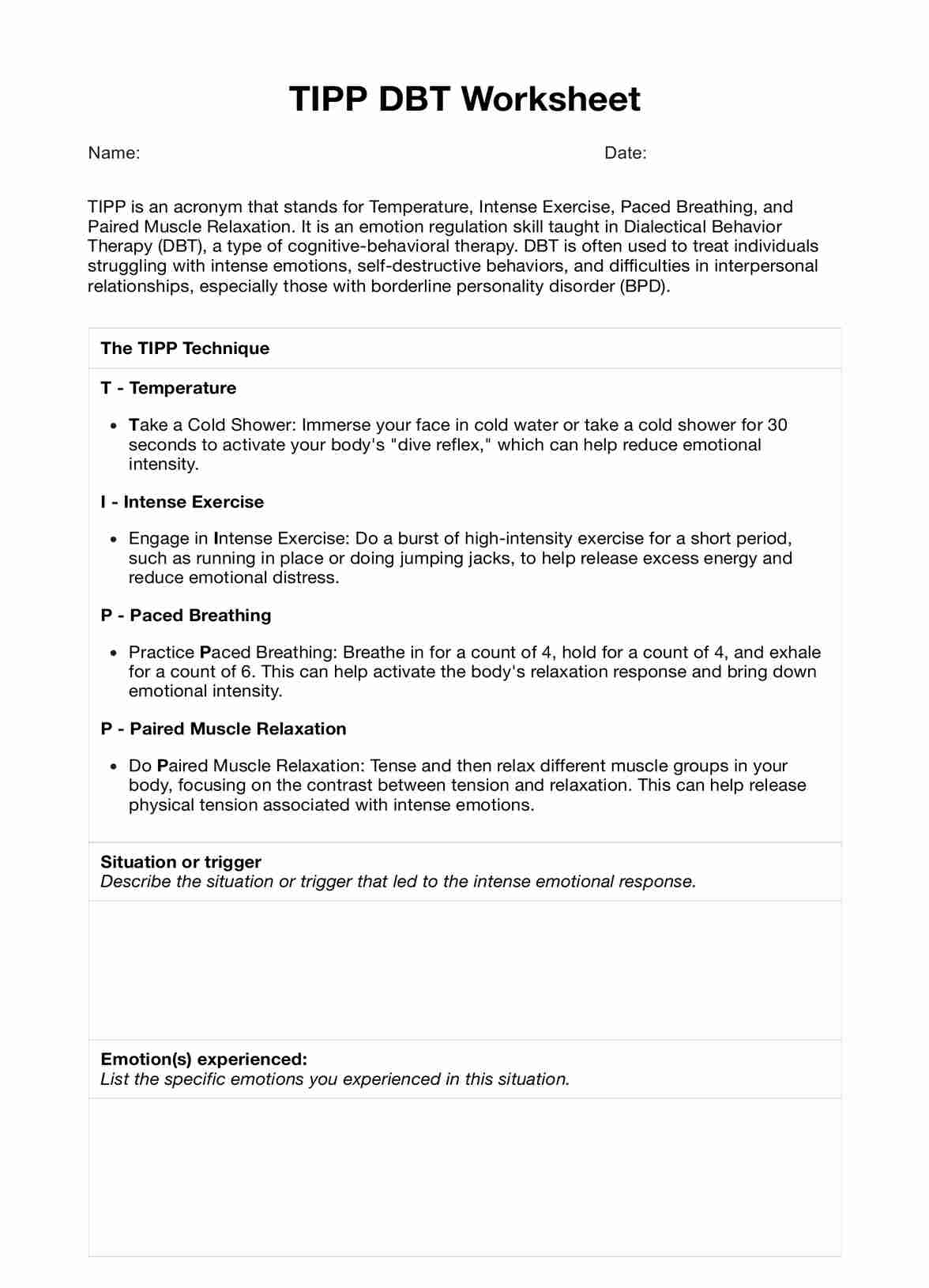Mental health professionals, especially those practicing Dialectical Behavior Therapy, leverage TIPP DBT Worksheets to facilitate the learning and applying distress tolerance skills.

TIPP DBT Worksheets
Learn how to use the TIPP DBT Worksheet in your practice. Download a free PDF template to help clients identify triggers and manage intense emotions.
Use Template
TIPP DBT Worksheets Template
Commonly asked questions
TIPP DBT Worksheets provide a structured approach to developing distress tolerance skills, enhancing self-awareness, fostering effective coping strategies, and promoting emotional clarity and focus.
You can utilize TIPP DBT Worksheets during therapy sessions or as homework assignments. This resource aids clients in identifying and managing distress while honing practical distress tolerance skills with the therapist's guidance.
EHR and practice management software
Get started for free
*No credit card required
Free
$0/usd
Unlimited clients
Telehealth
1GB of storage
Client portal text
Automated billing and online payments











